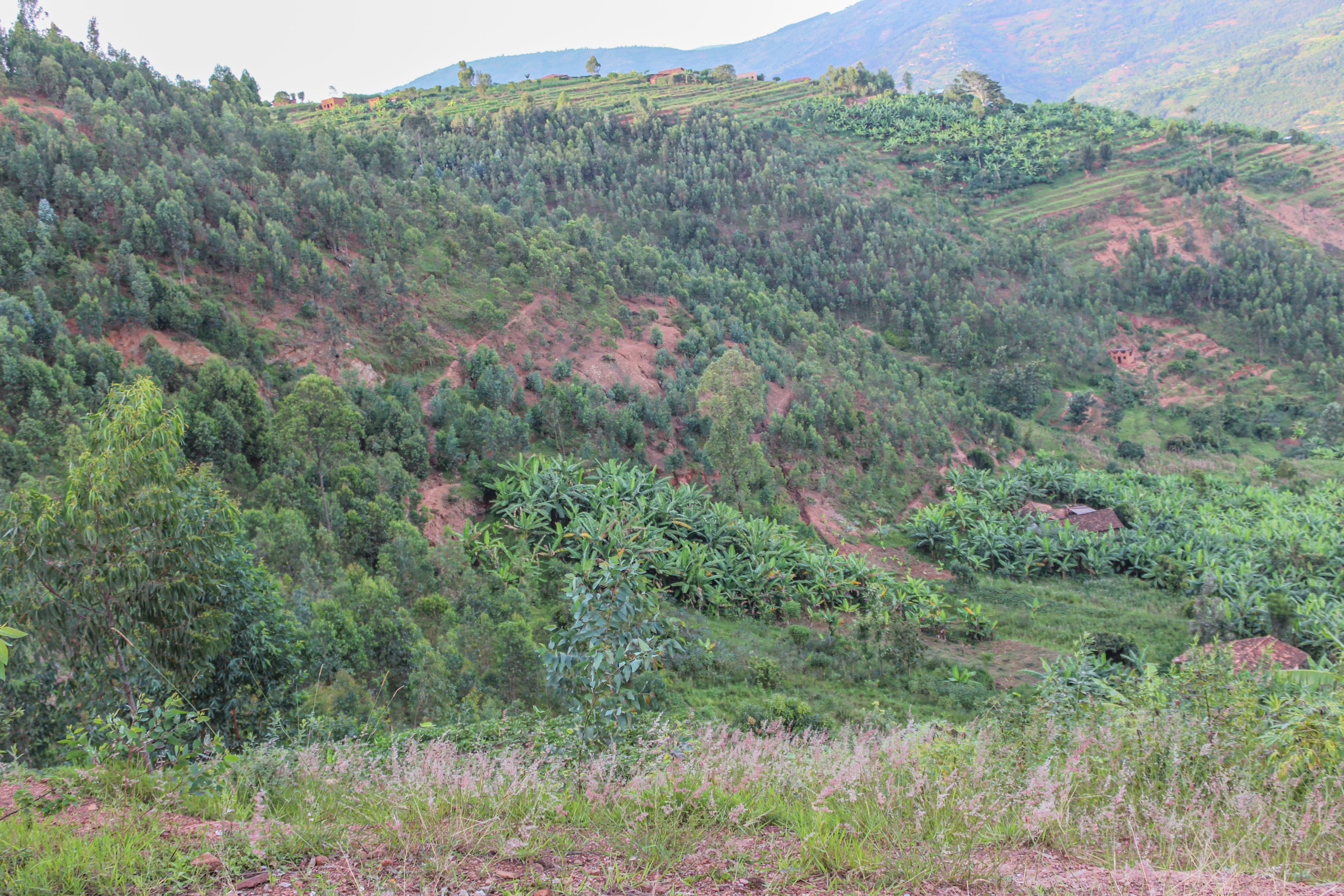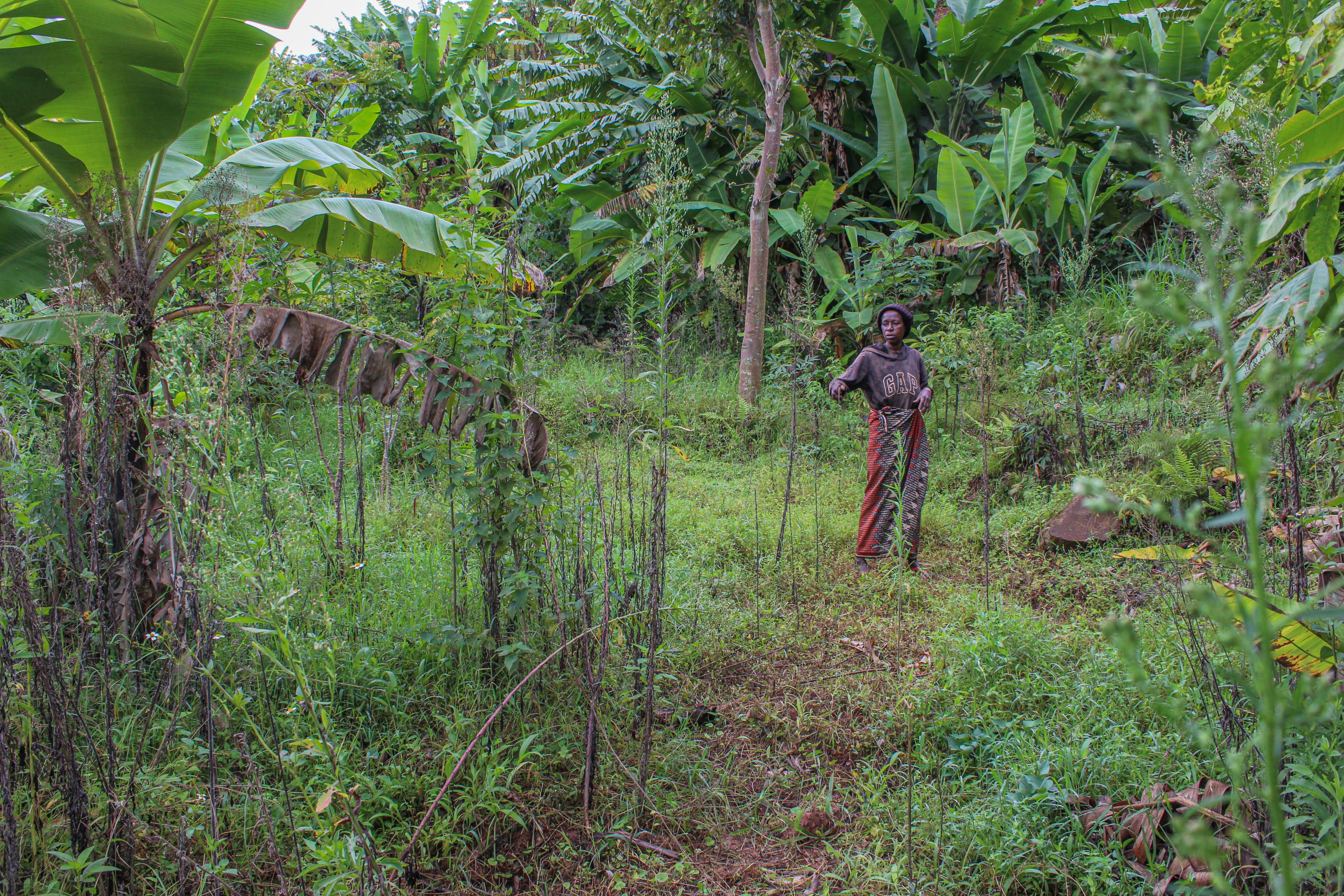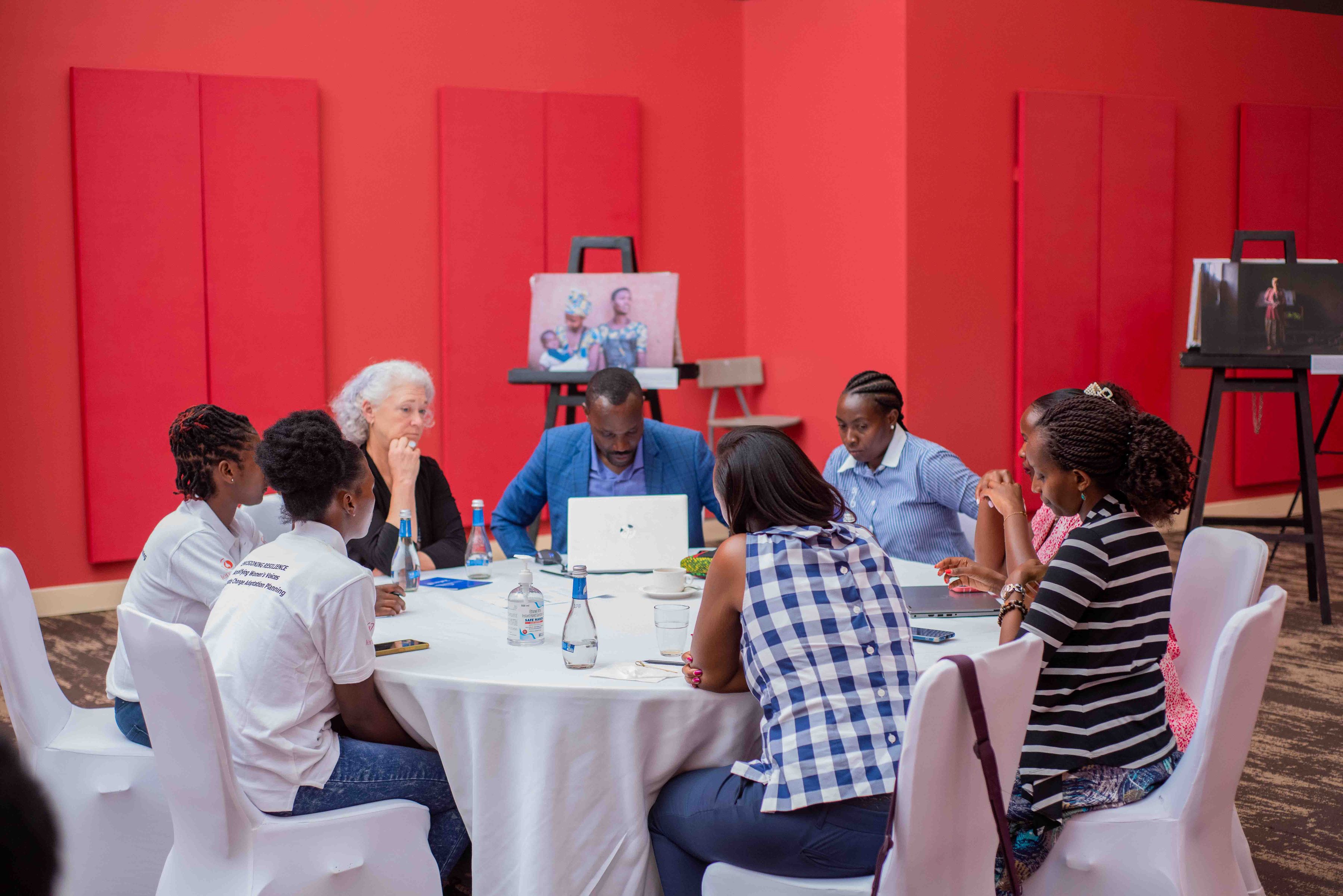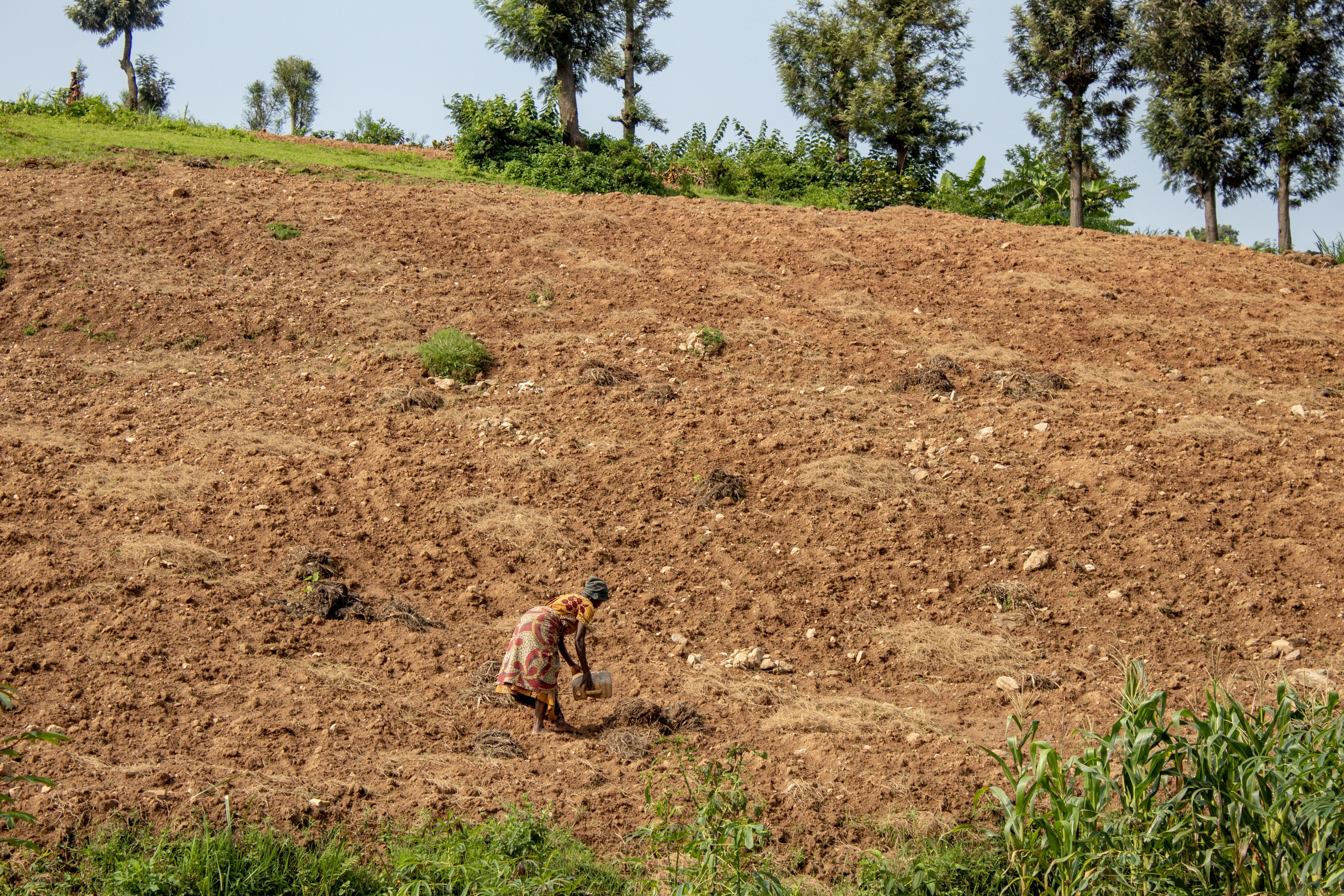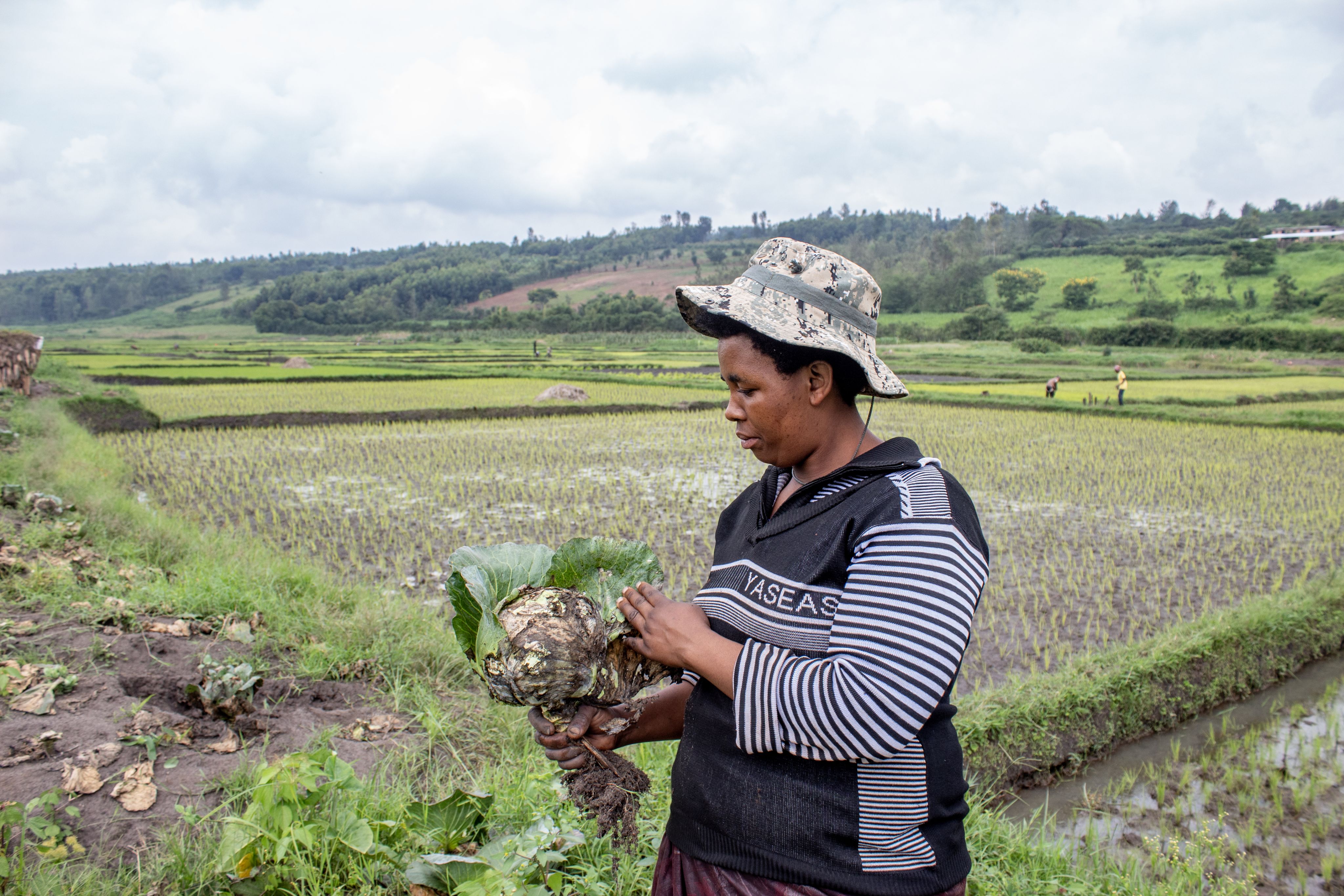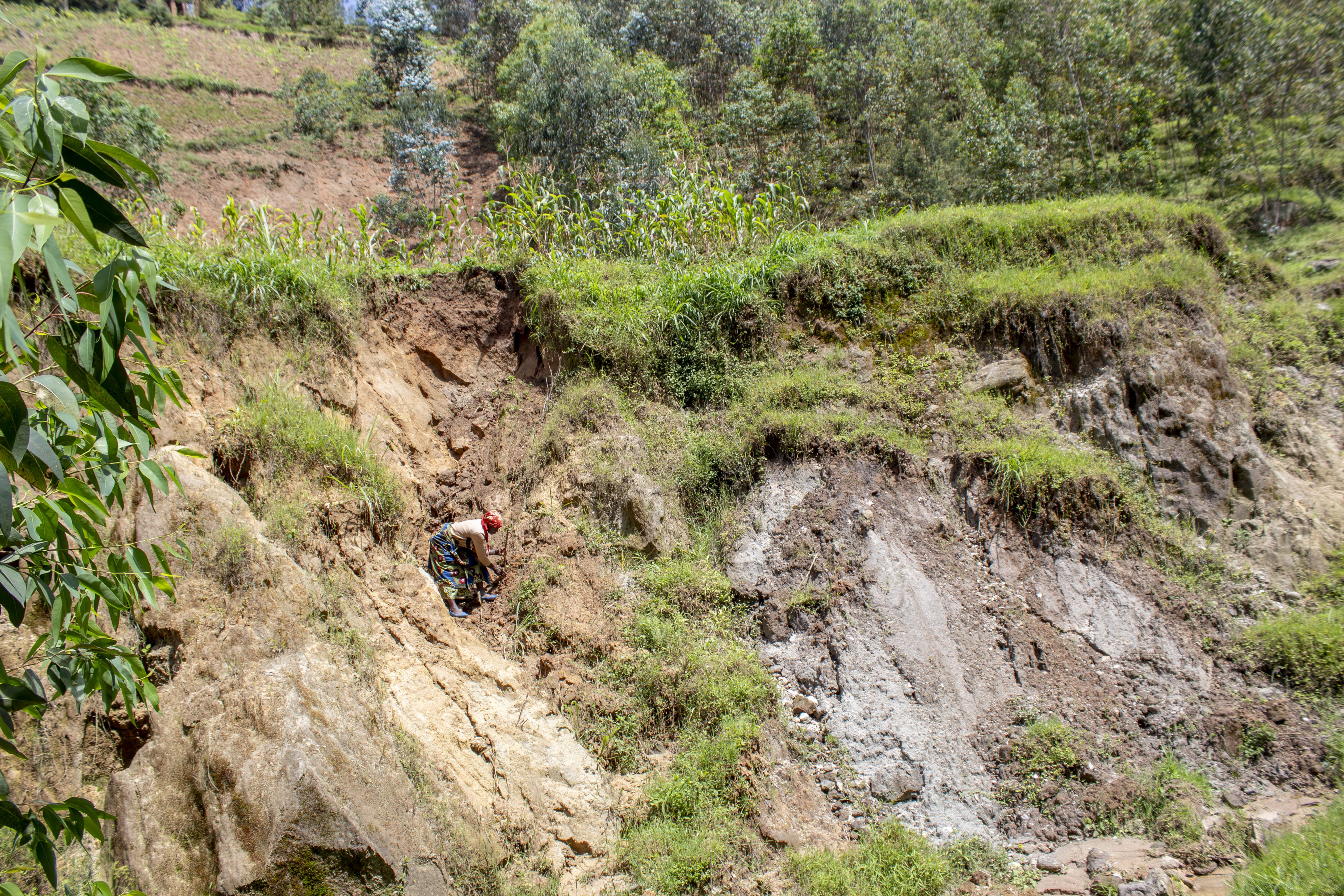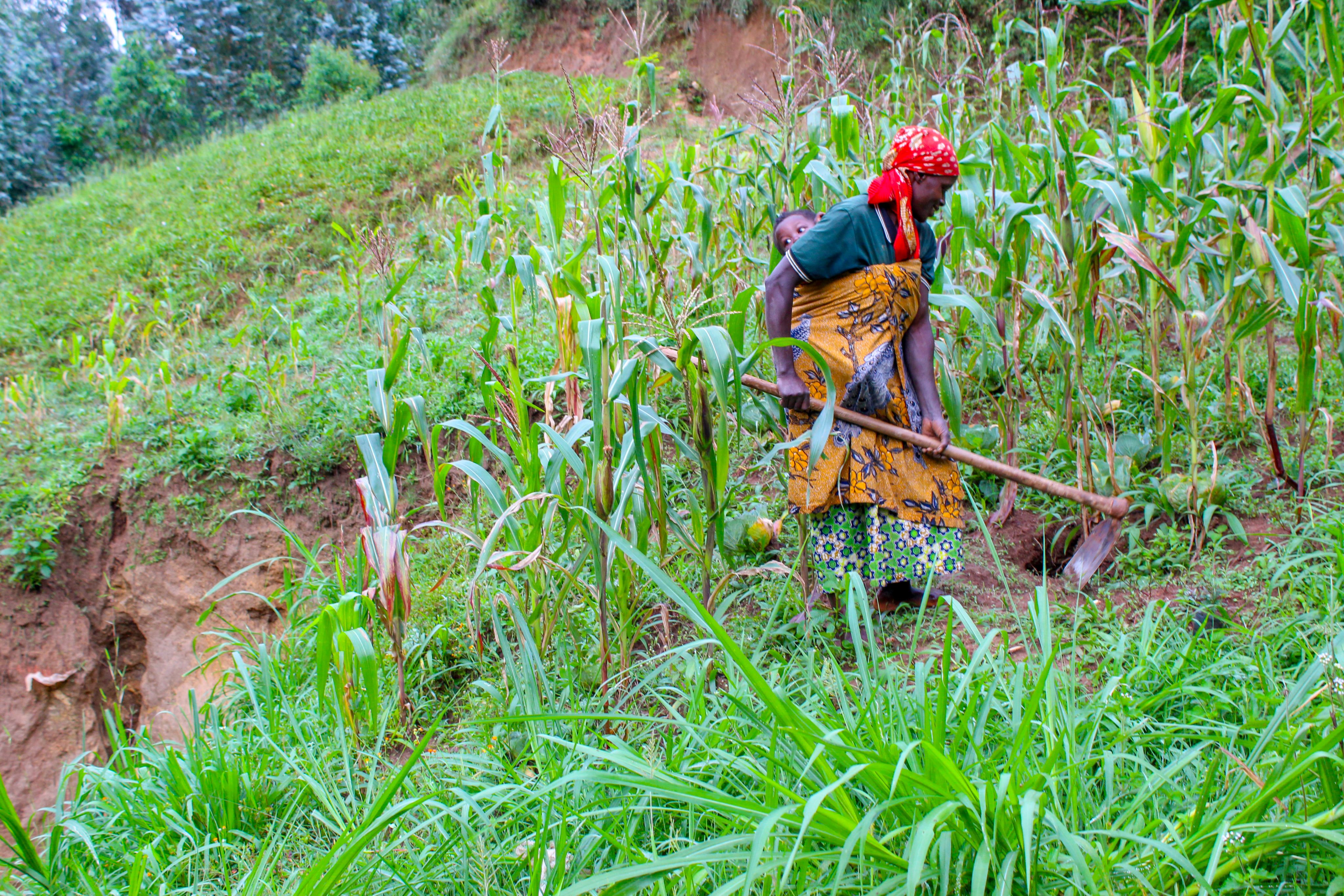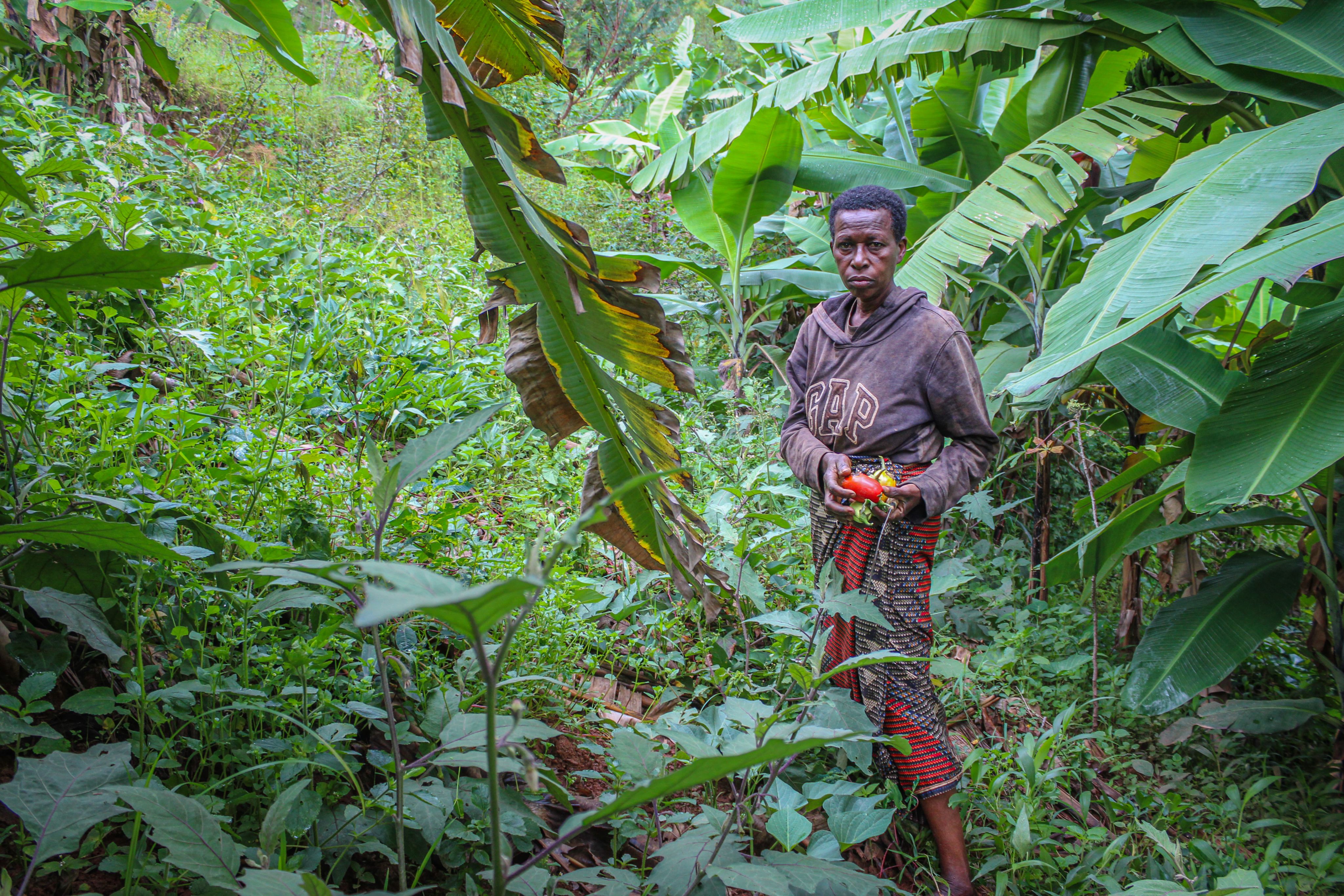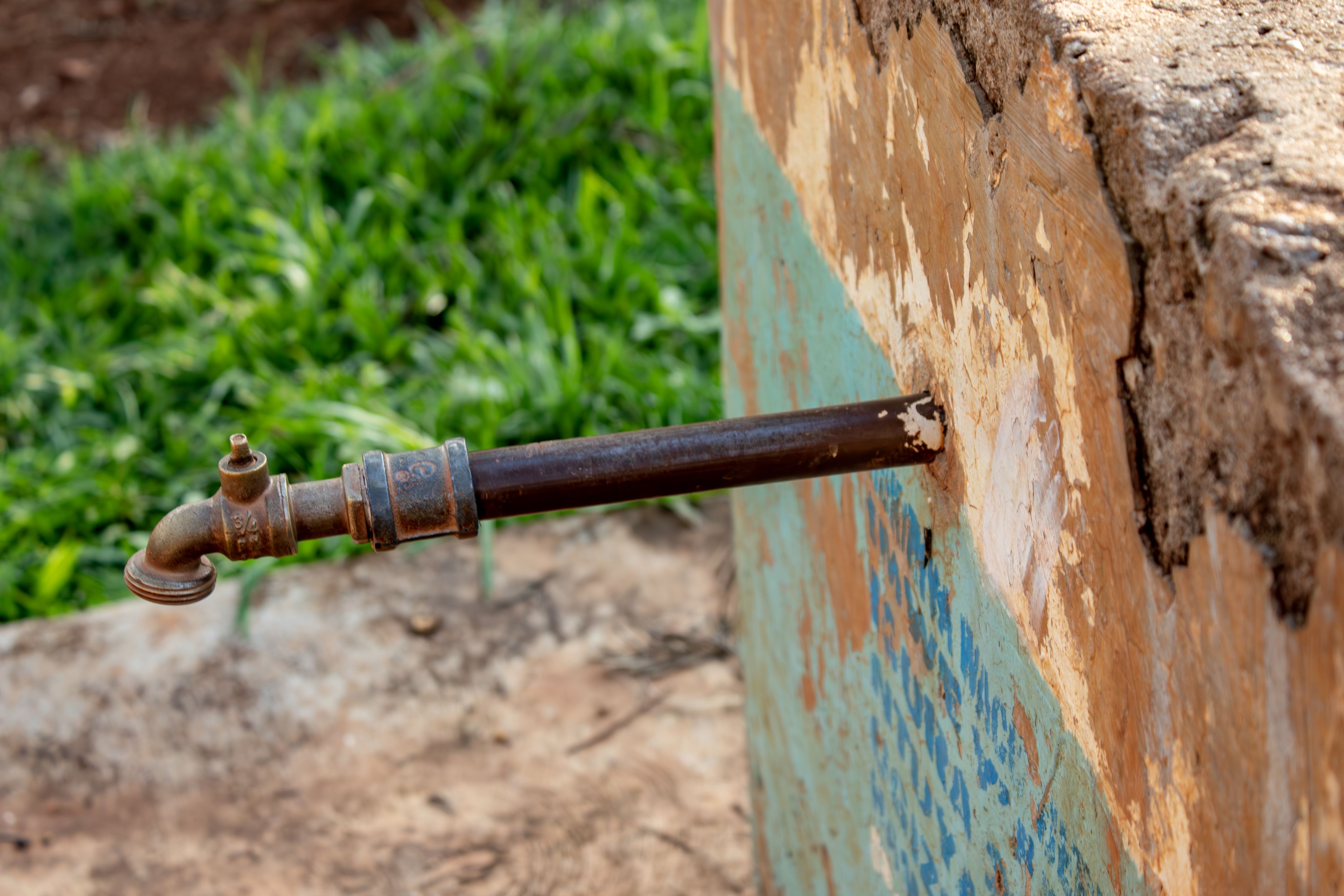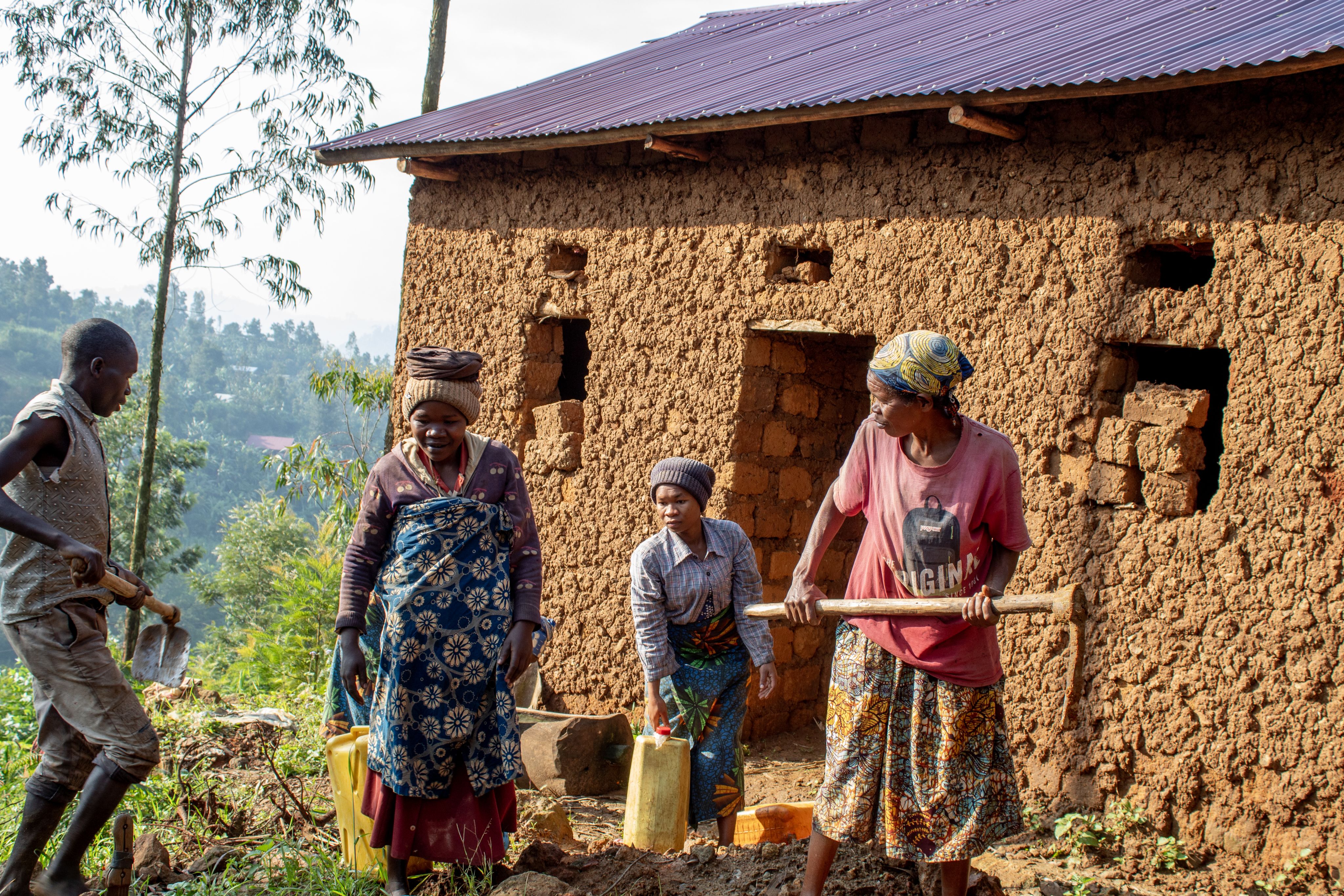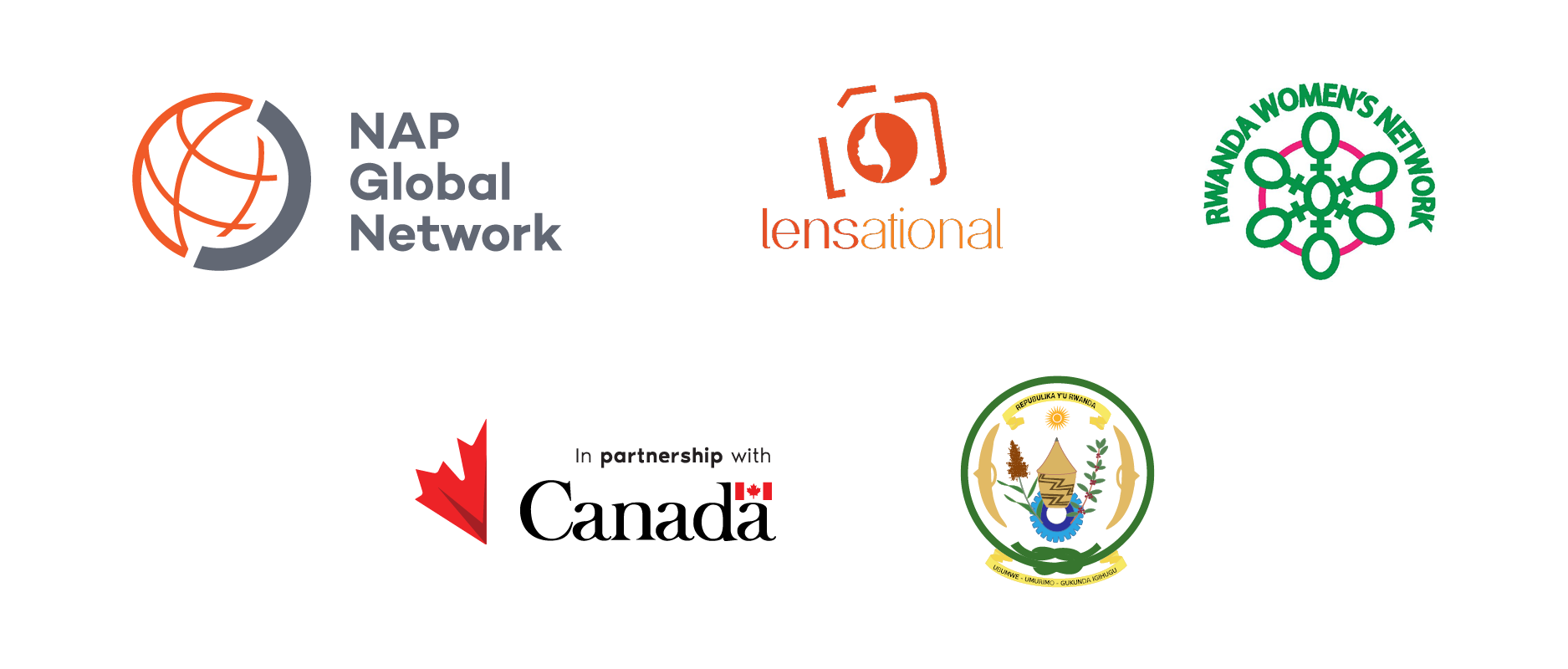“My Photos Are Giving a Voice to the People”
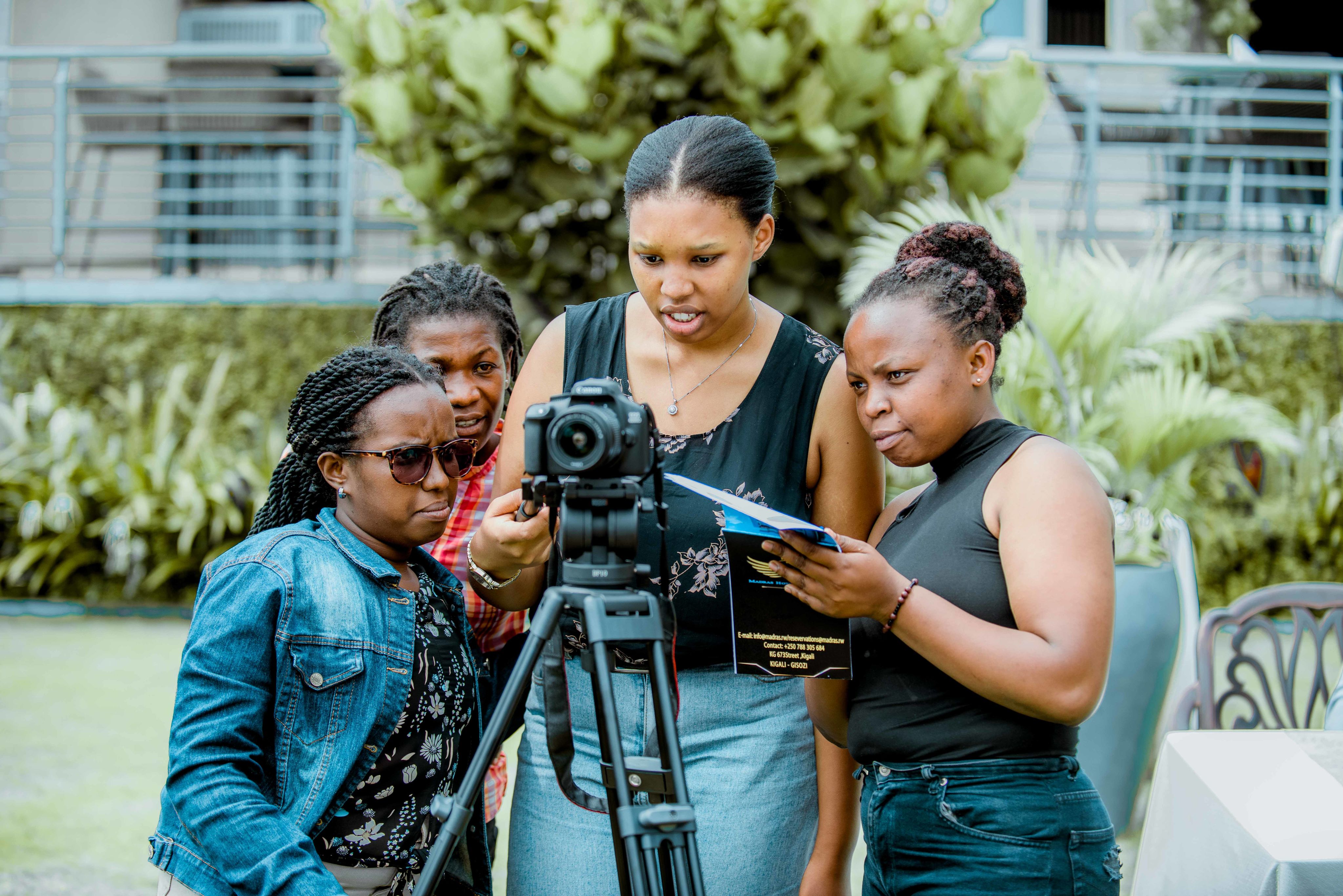
In the rolling hills of Rwanda, the future of climate change adaptation is being envisioned through the lens of those who experience climate risks first-hand. Envisioning Resilience is an initiative aimed at ensuring that adaptation priorities are informed by the lived experiences of those most impacted by climate change by amplifying the voices of women—those who are often left out of adaptation planning—at both the local and national levels.
Rwanda’s national adaptation plan (NAP) process has guided the country’s response to climate change. Led by the Ministry of Environment in partnership with the Rwanda Environment Management Authority, the NAP process promotes climate-resilient development and centres community- and ecosystem-based adaptation. While significant progress has been made in integrating communities’ needs into adaptation priorities, challenges remain in ensuring policies reflect the realities of those most affected and who experience higher vulnerability. Women are often disproportionately at risk in the context of climate change—yet they are also key drivers of solutions.
The photographers selected for the Envisioning Resilience training program in Rwanda, from top left, clockwise: Liliane Izere, Josiane Mukeshimana, Ange Mutoni, Diannah Munezero, Vestine Muhawenimana, and Clementine Twizerimana. Not pictured: Rosalie Dusabimana. (Alice Kayibanda Kayisire)
The photographers selected for the Envisioning Resilience training program in Rwanda, from top left, clockwise: Liliane Izere, Josiane Mukeshimana, Ange Mutoni, Diannah Munezero, Vestine Muhawenimana, and Clementine Twizerimana. Not pictured: Rosalie Dusabimana. (Alice Kayibanda Kayisire)
A landscape of Nombe Village in Rulindo, Rwanda. (Lilia Izere)
Esperance stands in the field where her house used to stand, now overgrown with shrubs and tall grass, in Nombe Village. On April 20th, 2018, Esperance and her husband Peter lost their home when it was buried under a landslide after heavy rains. (Lilia Izere)
Shaping Tomorrow
In 2023, Envisioning Resilience came to Rwanda in a partnership involving the NAP Global Network, Lensational, and the Rwanda’s Women’s Network. The initiative aimed to harness the power of visual storytelling to enhance the inclusiveness of engagement embedded in Rwanda’s adaptation planning. At the heart of the program is the belief that women, especially those who are marginalized, are not just victims of climate change but powerful agents of resilience.
Clementine Twizerimana, one of the photographers of the Envisioning Resilience training program, takes a picture with her fellow trainee, Liliane Izere. (Alice Kayibanda Kayisire)
Clementine Twizerimana, one of the photographers of the Envisioning Resilience training program, takes a picture with her fellow trainee, Liliane Izere. (Alice Kayibanda Kayisire)
Through the initiative, a group of Rwandan women from rural communities in seven distinct districts learned to use photography to document their realities, struggles, and most importantly, their resilient outlooks.
The women first engaged in a structured training process to learn photography and visual storytelling skills. Their photographs and outputs through the training then became the foundation of a policy dialogue with adaptation decision-makers and practitioners, including government officials from the Ministry of Environment of Rwanda. The workshop and its discussions reinforced a crucial message: adaptation planning must be informed by the experiences of those who live on the frontlines of climate change. Beatrice Cyiza, Permanent Secretary of the Ministry of Environment of Rwanda, observed that “the initiative has helped catalyze and propel the participation of women in the adaptation planning process, and it offers key recommendations to sustain momentum for inclusive decision making and meaningful climate resilience.”
Government officials, civil society actors, and policy advisors at the policy dialogue session in Kigali, Rwanda. (Peter Bazatoha)
Government officials, civil society actors, and policy advisors at the policy dialogue session in Kigali, Rwanda. (Peter Bazatoha)
The following photographs and captions were presented in the policy dialogue as part of the expanded photo stories produced by the women photographers in the Envisioning Resilience training program.
Mukarwego Martha harvests sweet potatoes in her field in Nyamagabe. Mukarwego Martha and her husband, Kanyandekwe, are farmers based in Nyamagabe. Erratic weather patterns, including excessive rains followed by droughts, have destroyed her crops, making it difficult to feed her family. The situation started 10 years ago, and it has been worsening every year. (Vestine Muhawenimana)
Mukarwego Martha harvests sweet potatoes in her field in Nyamagabe. Mukarwego Martha and her husband, Kanyandekwe, are farmers based in Nyamagabe. Erratic weather patterns, including excessive rains followed by droughts, have destroyed her crops, making it difficult to feed her family. The situation started 10 years ago, and it has been worsening every year. (Vestine Muhawenimana)
On the Front Lines
Rwanda is no stranger to the impacts of climate change. Unpredictable rainfall patterns threaten agriculture—the backbone of rural livelihoods—leading to erosion, flooding, and landslides that displace families and communities. In addition, rising temperatures and variable rainfall patterns strain availability and access to water resources. For many women, these impacts are further magnified by existing social and economic inequalities.
Photo: Generosa Hategekimana stands next to the remains of what she once knew as her home in a maize field in Gakenke in the Northern Province of Rwanda. On May 23, 2023, 63-year-old Hategekimana was abruptly awakened by an unsettling distress call as their house succumbed to a landslide. On the very night that Hategekimana lost her home, her two eldest children also lost their homes to the same landslide. All of them had built their houses on this piece of land, with only a few metres separating their residences. Hategekimana cherishes this land, which she has known as her home for over 30 years. The land has supported her and her family as farmers throughout the years, providing fertile ground to cultivate crops.

Nyirabugingo Celine, a farmer from Gishali Rwamagana, purchased a field located in the Gishali swamp. Since 2012, she has been distributing wholesale cabbages to different vendors in Rwamagana. Unfortunately, the cabbages have recently been affected by a disease called Kabore, which was caused by heavy rains in Gishali. (Josiane Mukeshimana)
Nyirabugingo Celine, a farmer from Gishali Rwamagana, purchased a field located in the Gishali swamp. Since 2012, she has been distributing wholesale cabbages to different vendors in Rwamagana. Unfortunately, the cabbages have recently been affected by a disease called Kabore, which was caused by heavy rains in Gishali. (Josiane Mukeshimana)
Lens of Resilience
Despite the challenges posed by climate change to their homes and livelihoods, the women captured in these photographs are constantly finding ways to persevere through the impacts. They adapt their farming techniques, build protective barriers against erosion, and construct ways to store and secure water. Many of the images tell stories that challenge the common narrative of women being climate change victims.
Clementine Murekeyoisi, a resident of Bugesera, draws water from Kamatana Dam. Clementine grew up experiencing difficulties due to water shortage. Having been resettled in the Nyamata sector from the Ntarama sector after the genocide, the dam is the nearest source of water. The dam in Kamatama was created in 1995 by Bugesera cattle owners who needed a reliable water source for their livestock. Presently, the residents of Murama rely on this dam for water, and local fishermen operate there as well. (Ange Mutoni)
Clementine Murekeyoisi, a resident of Bugesera, draws water from Kamatana Dam. Clementine grew up experiencing difficulties due to water shortage. Having been resettled in the Nyamata sector from the Ntarama sector after the genocide, the dam is the nearest source of water. The dam in Kamatama was created in 1995 by Bugesera cattle owners who needed a reliable water source for their livestock. Presently, the residents of Murama rely on this dam for water, and local fishermen operate there as well. (Ange Mutoni)
Francine Mukandamage is seen planting a tree in a sloped area of her field in Nyaruguru. The soil erosion affecting the farmer’s land is apparent in this photograph, but she hopes planting trees in the sloped areas will encourage soil retention and prevent further erosion when heavy rain strikes again. (Rosalie Dusabimana)
Carrying her daughter on her back, Francine Mukandamage checks on her maize in Nyaruguru, in Rwanda’s Southern Province. Mukandamage is a farmer and a mother of four who owns this small field. She relies on it to earn income, as well as other farming activities. In the past year, heavy rain resulting in soil erosion in this area of the country has affected Francine’s yield. Her husband, who works in construction, is often not at home, but there are days when he does not work, and she is the one who brings everything home. (Rosalie Dusabimana)
Esperance Musabende harvesting tomatoes and eggplants from the remaining parts of her family’s farm, which was previously destroyed and buried in a landslide after heavy rains in 2018. Following her husband Peter’s health deterioration, Esperance has taken up much of the responsibility of caring for and catering to the family. (Liliane Izere)
Esperance Musabende harvesting tomatoes and eggplants from the remaining parts of her family’s farm, which was previously destroyed and buried in a landslide after heavy rains in 2018. Following her husband Peter’s health deterioration, Esperance has taken up much of the responsibility of caring for and catering to the family. (Liliane Izere)
Many Hands, One Vision
Community is at the heart of resilience. By joining hands in a shared effort to deal with climate change impacts, these women and their communities showcase how resilience is not built in isolation: it often requires collective actions and support from institutions and authorities to be effective and well-integrated.
Bugesera has always dealt with challenges related to water shortage. It is the hottest and driest part of the country, and it experiences many droughts. Over the years, the government has built a number of water collection stations, communally shared, to serve the people of Bugesera in the different cells and sectors. Some water stations, however, only have water running intermittently, while others, such as this one, have been out of use for over 5 years. (Ange Mutoni)
Bugesera has always dealt with challenges related to water shortage. It is the hottest and driest part of the country, and it experiences many droughts. Over the years, the government has built a number of water collection stations, communally shared, to serve the people of Bugesera in the different cells and sectors. Some water stations, however, only have water running intermittently, while others, such as this one, have been out of use for over 5 years. (Ange Mutoni)
In spite of challenging times, Hategekimana Generosa is already in the process of rebuilding her home. Her will and determination to overcome this difficult situation are evident in the way she has been able to rally friends and family to help her build back her life. She borrowed from savings groups and shared her story with many to garner the backing she needed to start rebuilding. As she is not able to afford labour, she and her children have been working hard to build this new house. It doesn't sit well with Hategekimana that she is in debt, and this prevents her from being able to think calmly about the future. She hopes that moving into her new house, now almost habitable, will relieve some of these worries and help her focus on a plan for getting out of debt. (Clementine Twizerimana)
In spite of challenging times, Hategekimana Generosa is already in the process of rebuilding her home. Her will and determination to overcome this difficult situation are evident in the way she has been able to rally friends and family to help her build back her life. She borrowed from savings groups and shared her story with many to garner the backing she needed to start rebuilding. As she is not able to afford labour, she and her children have been working hard to build this new house. It doesn't sit well with Hategekimana that she is in debt, and this prevents her from being able to think calmly about the future. She hopes that moving into her new house, now almost habitable, will relieve some of these worries and help her focus on a plan for getting out of debt. (Clementine Twizerimana)
Farida stirs minced meat as she and Niyibizi Muhamad, her husband, work together to make samosas. Their granddaughter, Salma, who they live with, tries to help. Farida also tends a farm borrowed from a family friend near their new home in Mageragere, where she grows various foods so they can have produce for their household. Their previous home was built on a wetland, which is at risk of flooding. They were compelled to leave their home of 8 years in 2019 to relocate to safer grounds and rebuild their livelihoods. (Diannah Munezero)
Farida stirs minced meat as she and Niyibizi Muhamad, her husband, work together to make samosas. Their granddaughter, Salma, who they live with, tries to help. Farida also tends a farm borrowed from a family friend near their new home in Mageragere, where she grows various foods so they can have produce for their household. Their previous home was built on a wetland, which is at risk of flooding. They were compelled to leave their home of 8 years in 2019 to relocate to safer grounds and rebuild their livelihoods. (Diannah Munezero)
"For me, it means that I do not just take photos for the sake of it; I am also helping to raise awareness about the impact of climate change. Knowing that my photos are giving a voice to the people and helping to raise awareness on a global scale makes me proud and motivated to continue documenting these important issues."
Dianna Munezero
Raising Voices, Pooling Actions
The photographs captured through the Envisioning Resilience program tell important stories of women’s lived experiences with climate change and their perspectives on resilience. While these narratives are still unfolding, the stories have sparked an ongoing conversation, one where decision-makers can recognize the value of integrating front line perspectives into adaptation planning.
For the women behind the cameras, this initiative has also been transformative for their own reflections on climate change adaptation and resilience.
As Rwanda moves forward in shaping and implementing its NAP process, the inclusion of women’s voices through visual stories sets a precedent for how climate action can be both participatory and effective. By elevating these perspectives, we are not just capturing images—we are capturing the future of resilience in Rwanda, where women’s lived experiences, agency, and innovation are driving policies and planning.
"I feel like a capable girl who could represent her country through photographs. It brought me immense joy and allowed me to represent my country through photography. It motivated me to persist in my efforts to capture images and report on climate change through my photographs."
Lilian Izere

In Rwanda, Envisioning Resilience is an initiative of the NAP Global Network, Lensational, and the Rwanda Women’s Network, in collaboration with Rwanda’s Ministry of Environment. Funding for the initiative is gratefully received from Global Affairs Canada.


